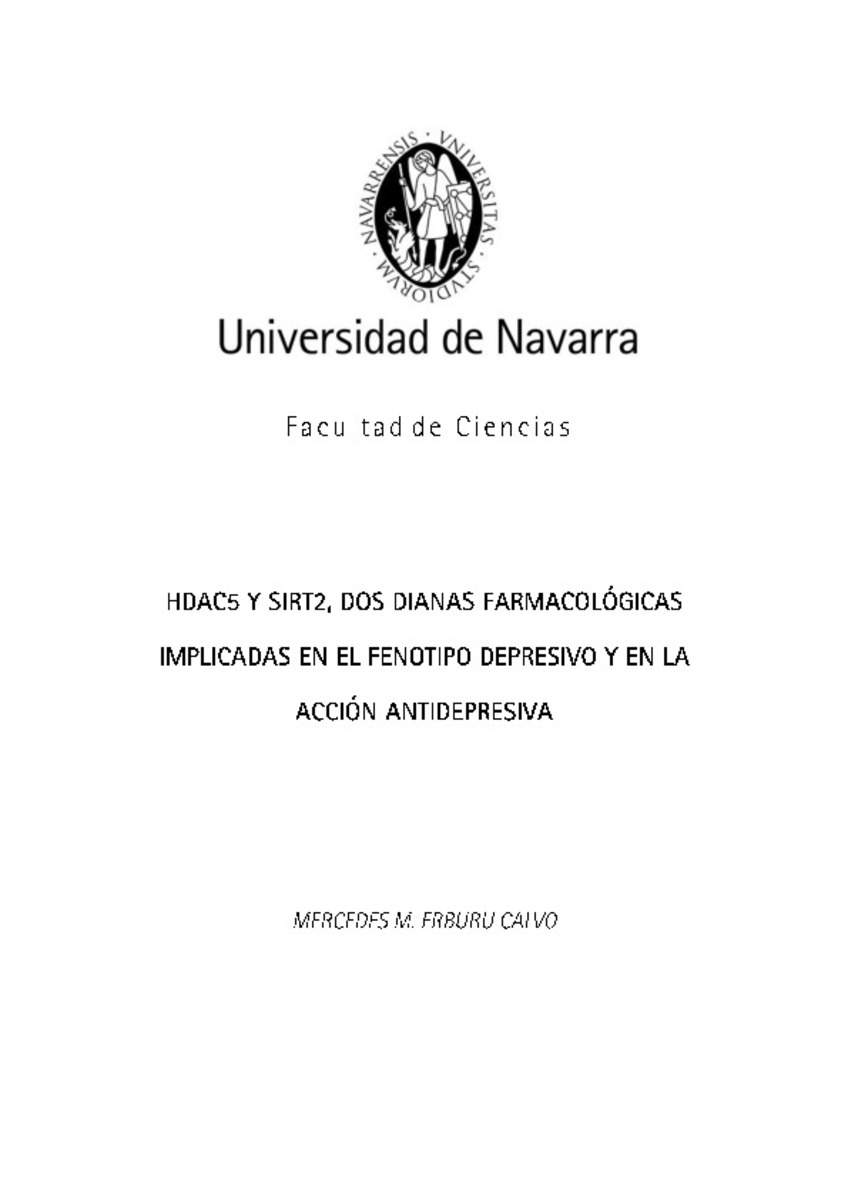HDAC5 y SIRT2, dos dianas farmacológicas implicadas en el fenotipo depresivo y en la acción antidepresiva
Keywords:
Materias Investigacion::Farmacia::Farmacia y farmacología
Farmacología experimental
Neuroquímica
Respuestas del comportamiento
Defense Date:
19-Oct-2016
Citation:
ERBURU, Mercedes Micaela. “HDAC5 y SIRT2, dos dianas farmacológicas implicadas en el fenotipo depresivo y en la acción antidepresiva”. Tordera, R. M. y Puerta, E. (dir.). Tesis doctoral. Universidad de Navarra, Pamplona, 2016
Statistics and impact
0 citas en

0 citas en

Items in Dadun are protected by copyright, with all rights reserved, unless otherwise indicated.







